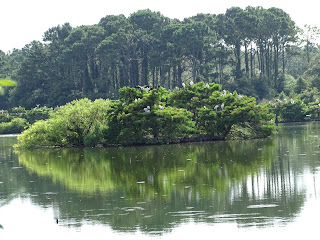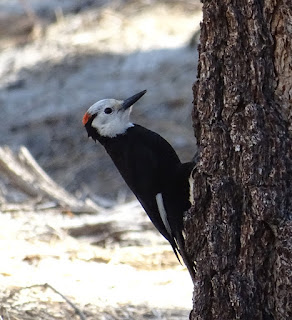One of our very favorite places to bird is also home to alligators! Welcome to Harris Neck Refuge in southeast Georgia. These alligators lie motionlessly at the bottom of trees with their mouths open wide in hopes of nestlings falling out of their nests. This seems to be contradictory if you are trying to protect species but they help prevent nest predation by other wiley predators like tree climbing raccoons.
I fell in love with "birding", the act of searching for birds, on my first Atlanta Audubon field trip to the coast of Georgia years ago. These herons that were present then are still returning to these ponds today.
The first time I came to this refuge, I was totally in awe of the mixed rookery of wood storks, great egrets and snowy egrets. It is a scene out of a David Attenborough special. When I go to special places, I try to identify a couple of birds that I want to find and then, everything else is "icing on the cake or pie" depending on your country of origin. My "target birds" were the painted bunting and roseate spoonbill.
Success! A small flock of roseate spoonbills let me get a distant "dreamy or hazy" photo before flying off to the distant forest. I wish I had a better look and photo but I was thrilled to see them even though if was for a brief moment.
Luck was on my side! Look at this brilliant colorful bird! It appears that I am in the Amazon right? It is a painted bunting, Passerina ciris. Sadly, this beauty is being caught and sold illegally in Mexico and the Caribbean where it resides in the winter because of its spectacular colors. Evidently, this isn't anything new. In 1841, John James Audubon reported thousands of these birds being shipped from New Orleans to Europe. UGH!
The wood stork has a pretty ingenious way of keeping its nestlings cool...they regurgitate water over their nestlings. I learned that fun fact from Cornell Lab of Ornithology. If you haven't tapped into their expertise and knowledge, now is the time!
Any birding trip worth going on involves other parts of nature. So I must introduce you to one of my favorite critters, the green anole. They have this special talent of camouflaging themselves to their surroundings. One moment they are bright green after hanging out in the grass, the next they turn brown to match the bark of a tree.
This unlucky anole didn't miss the sharp eyes of a red-shouldered hawk! I can't believe I caught this action myself!
A trip to the southeastern coast wouldn't be complete without a trip to the beach. Laughing gulls and black skimmers were the highlights for me. Remember when you visit these special places, that we are the visitors but the wildlife that we see depend on these spots for their survival so respect their space and "tread lightly".
Click on photos to enlarge.
Photos and content by Robin Roberts.




























